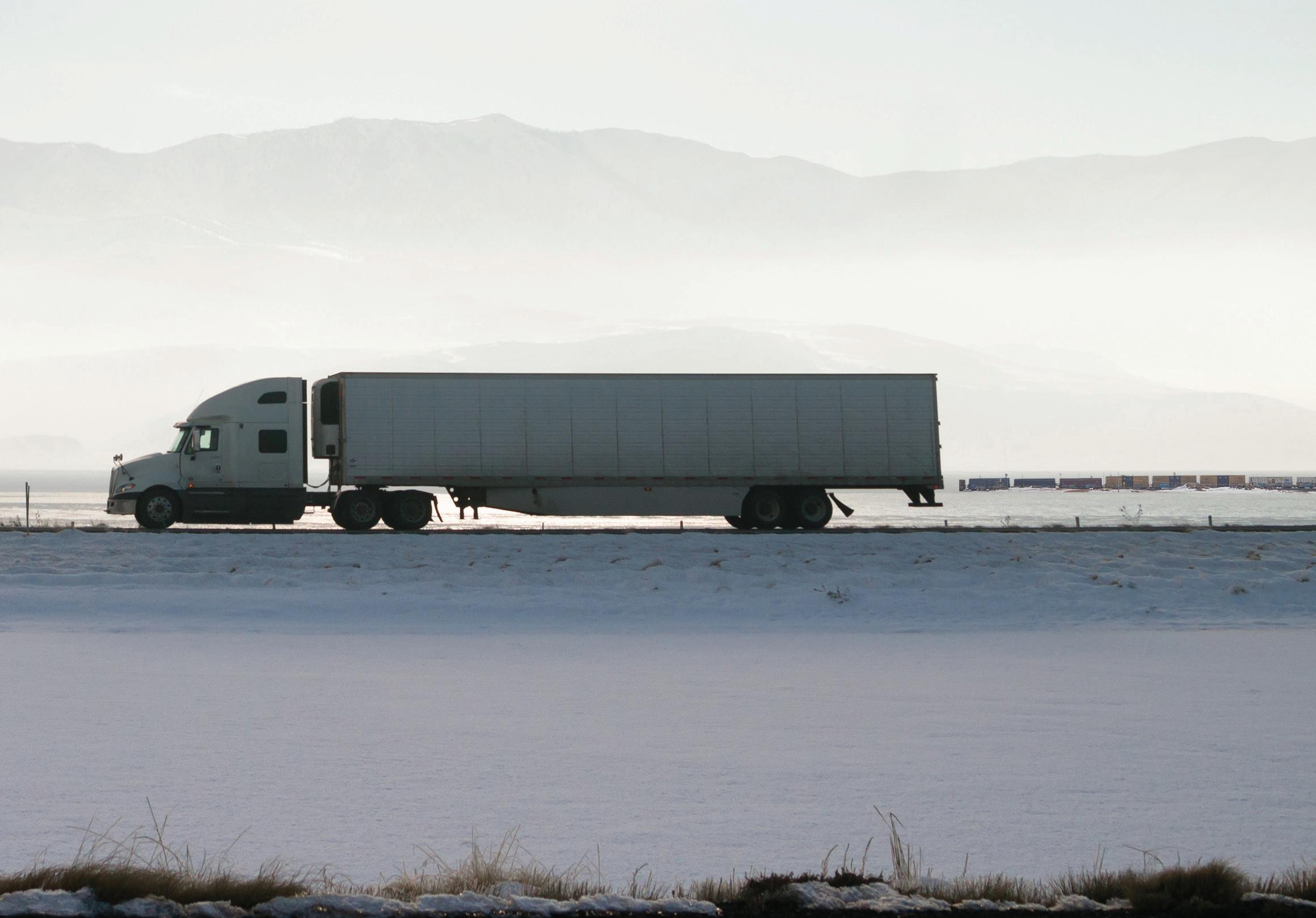
6 minute read
The Ease of Accessibility
THE EASE OF ACCESSIBILITY
AIRPORT & WATERWAY
Advertisement
THE WORLD IS YOUR MARKETPLACE
Let’s take you closer to the world in minutes.
Niagara Falls, Canada is in close proximity to one regional airport and four international airports - all less than 125 kilometres away. Public & private freight or passenger aircraft at the Niagara District Airport (Niagara-on-the-Lake, ON). National and international passenger and cargo services through Niagara Falls International Airport (Niagara Falls, NY), Buffalo Niagara International Airport (Cheektowaga, NY), John C. Munro International Airport (Hamilton, ON), and Lester B. Pearson International Airport (Toronto, ON). Pearson is Canada’s largest and busiest airport, and the fourth largest entry point into North America. With over 180 destinations around the globe combined, reach your global marketplace from Niagara Falls, Ontario, Canada.
North American goods transported by water are valued at $300 billion annually.
The St. Lawrence Seaway, and the Great Lakes form a 3,700 km marine highway that directly links the industrial heartland of North America to Europe and the world: 41 ports serve as key nexus points connecting to roadways and rail lines; The majority ports are closer to European markets than East Coast or Gulf ports; Goods transported by water in North America is valued at over $300 billion on an annual basis; Shipping generates a yearly revenue of more than $3.4 billion in transportation and $4.3 billion in personal income.
ROAD & RAILWAY
LOGISTICALLY SPEAKING
Reach more than 2,000,000 consumers in less than an hour-drive.
Niagara Falls, Canada is connected to major North American Markets through an extensive highway system that includes Ontario’s 400 series highways, the Queen Elizabeth Way (QEW), and I-90 Corridor providing access to much of the United States’ eastern seaboard. Businesses in Niagara Falls, Canada can reach more than 2,000,000 consumers in less than an hour by road, making the city ideal for logistics, distribution, retail, and even service industries.
Access multiple freight and passenger railways servicing our iconic city.
Our city has access to CP and CN rail lines for passengers and freights. Our city is also serviced by the regional public passenger transit, GO Transit, a division of Metrolinx that offers services for the Greater Toronto and Hamilton Areas with routes extending to the Greater Golden Horseshoe carrying more than 70 million passengers annually. GO has a weekday service of two trains daily from Niagara Falls to Toronto and the weekend and holiday service trains along with bike train services to Niagara Falls, Ontario, Canada.

NIAGARA FALLS Trade & Investment
UNITED STATE OF AMERICA UNITED KINGDOM
FRANCE

NIAGARA FALLS, CANADA NETHERLANDS SWEDEN
GERMANY
AUSTRIA
FOREIGN DIRECT INVESTMENT IN NIAGARA FALLS
TAIWAN
Niagara Falls is a critical hub for trade between Canada and the United States. As one of North America’s most important economic trade corridors, the trade that flows across Niagara Falls’ borders totals well over $100 billion and supports hundreds of thousands of jobs across Canada and the United States. The economies of both countries are intrinsically linked by the flow of goods, services and people. In addition to the $105.4 billion (CDN) in total freight value that crossed both ways at the borders connecting Niagara Falls, Ontario and New York State in 2015, 78% of the St. Lawrence Seaway’s $34.6 billion in economic activity passes through Niagara on the Welland Canal. Looking at the most common goods that flow through Niagara’s borders further illustrates the important role Niagara Falls plays as a trade corridor supporting both countries’ economies.
Trade Agreements That Work
USMCA - The Agreement between the United
States of America, the United Mexican States, and Canada is a signed but not ratified free trade agreement between Canada, Mexico, and the United States. Primarily known as the acronym USMCA, the agreement is the culmination of two years of ongoing dialogue between the leadership of each North American nation. Initially announced on 30 September 2018, USMCA modifies many of the guiding tenets of NAFTA and is positioned to act as its replacement.

CETA - The Canada-European Union Comprehensive Economic and Trade Agreement (CETA) is helping to create jobs, strengthening economic relations and boosting Canada trade with the world’s second-largest market. CETA is a progressive free trade agreement which covers virtually all sectors and aspects of Canada-EU trade in order to eliminate or reduce barriers.
$100+ BILLION IN TRADE FLOWS ACROSS NIAGARA BORDER PER YEAR
Value of Commodities
Traded through Niagara Borders, both ways, 2015:
Vehicles, Auto Parts & Accessories $24.billion $11.7 billionNuclear Reactors, Boilers, Machiner, Appliences & Parts $8.3 billionMineral Fuels, Oils, & Waxes; Bituminous Substances $6.7 billionElectrical Machinery, Equipment, and Parts Plastics $4.7 billion Pharmaceutical products $3.7 billion
CAD Currency
CANADIAN FOREIGN TRADE ZONE POINT
Niagara is uniquely designated as a Canadian Foreign Trade Zone (FTZ) Point by the Government of Canada. An FTZ is a task force of Federal, Provincial, Regional/Municipal/and Private Stakeholders, and the prime contact for efficiency, improved competitiveness, and financial savings for businesses in the region with international operations.
FTZ policy targets exporting and allows Canada to receive goods tax and duty-free, and use the goods to manufacture products for export. Where exported product is sold to countries outside Canada such as the US, no tax and duty are payable. The exemption of tariffs and HST helps bolsters new and existing export-oriented businesses and improve employment in the industry. Our prime proximity from Toronto to the US border (from Chicago to Boston and Buffalo to Philadelphia) gives
Niagara robust accessibility (800 km) to a population of 130 million and GDP of $5.7 trillion via road, rails, air, and waterways. Uniquely positioned, the Task Force will assist companies and suppliers with exportation of products and exemptions for taxes, duty, and tariffs.
NFTZ is designed to support Canada’s export development efforts and can be accessed through their municipality to reach other government agencies such as Canada Revenue Agency, Canada Border Services Agency, Transport Canada, Export Development Canada, Innovation, Science and Economic Development Canada (FedDev), and Global Affairs to help navigate incentive programs, mentoring from experienced exporters, global networking opportunities, educational assistance to name a few.
ONTARIO’S FIRST FOREIGN TRADE ZONE
Total Exports Employment Growth Rate among Niagara Exporters Growth of Value among Niagara Exporters Transporation & Logistics Businesses Created Number of People Employed in the Sector Manufacturing Exports Wholesale Trade Exports Agricultural / Forestry / Fishing / Hunting Exports Transportation / Warehousing Exports Construction Exports Major Highways Commercial Vehicle Border Crossings Trucks Crossing each year

$4.1 BILLION 13% $500 MILLION 435 7,000+ $3.7 BILLION $200 MILLION $110 MILLION $20 MILLION $15 MILLION 4 2 1 MILLION
NIAGARA GATEWAY ECONOMIC ZONE & MUNICIPAL EMPLOYMENT INCENTIVE PLAN
The Niagara Gateway Economic Zone is a Community Improvement Plan between the Niagara Region and Local Area Municipalities providing generous incentives to attract business. The Gateway CIP supports projects that revitalize, strengthen and diversify strategic zones within five Niagara municipalities including Niagara Falls. Eligible projects promoting private sector investment, development, redevelopment, and construction activity in these strategic zones may be eligible to receive significant tax reductions as well as grants to offset development charges related to the investment.
The Region offers Two Incentives:
TAX INCREMENT BASED FUNDING PROGRAM This program offers a 5-10 year tax increment based grant on local property taxes for post-project values.
REGIONAL DEVELOPMENT CHARGE GRANT PROGRAM Recognized as exceptional development projects that score high on the Gateway CIP evaluation, the Region offers DC relief capped at $1.5 million.
MUNICIPAL EMPLOYMENT INCENTIVE PROGRAM OFFERS: i. Planning Application Fee waivers ii Building Permit Fee rebates iii. Study Grants
Visit niagarafallsbusiness.ca and niagaracanada.com for more information about these programs.







